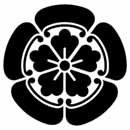 I looked into other countries using hanafuda
and I found that Korea has their own version of this card game. The name of
their version is Hwa-tu which means “flower cards” in Korean, but they are more
reffered to as Godari or Go-stop. They are pretty similar but there are some
differences:
I looked into other countries using hanafuda
and I found that Korea has their own version of this card game. The name of
their version is Hwa-tu which means “flower cards” in Korean, but they are more
reffered to as Godari or Go-stop. They are pretty similar but there are some
differences:
- -The five bright
cards have a small yellow or white circle in one corner. Printed on the circle
is the chinese character guang which means “light, bright”.
- -
The ribbons in
Hanafuda are usually purple while in Go stop they are blue
- -
The text on the
the ribbons are in korean characters hung-dan (read ribbon). The purple ribbons
are replaced chung –dan (blue ribbon) that also don’t have andy writing on
them.
- -
Go-stop usually
have extra cards than hanafuda which usually are bonus cards that can be
grouped to make more combinations. their deck ends up being 48 suit cards plus
and extra of 6 cards.
The shuffling of these cards are the same. When it
comes to dealing out the cards each player ends up having 10 cards in their
hand while the in hanafuda you have 8. As for gameplay the concept of trying to
match cards, one from your hand and one that
is drawn from the faced down pile. Some
of the rules are different though. If a card drawn from the top of the draw
pile matches two cards then the three cards remain on the table. The three
cards remain on the table untill the player collects them with the fourth card.
If a player draws a card the matches a discarded card then they take both cards
and a junk card from eack opponent. If they get 3 cards of the same month then
they double their points for every set of 3 they have. Or they can collect all
4 cards when the fourth card is on the
table as well as a junk card. If a player
draws a bonus card from the draw pile during their regular turn, they will
automatically collect it along with any other cards matched during that turn,
except in the event that there is a set of three cards on the table, in which case all four cards must remain on
the table


